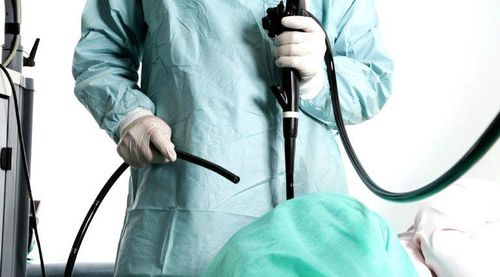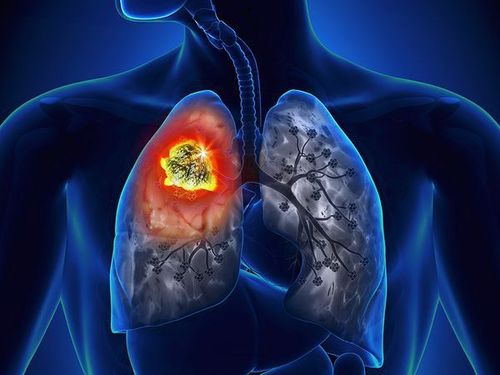This is an automatically translated article.
The article was professionally consulted by Specialist Doctor I Le Thien Quang - Internal Oncologist - Department of Examination & Internal Medicine - Vinmec Danang International General Hospital. The doctor has more than 15 years of experience in the field of examination and diagnosis of oncological diseases and methods of radiation therapy, chemotherapy, targeted therapy and palliative care.Cough is a common presentation in most lung cancer patients. However, this sign is also present in many other diseases. So in order to diagnose the disease correctly, in addition to the cough, what other warning signs do lung cancer patients have?
1. Cough - a common symptom of lung cancer
A simple cough occurs in more than 75% of lung cancers. However, coughing up blood is the only symptom that requires the patient to see a doctor. Cough symptoms in people with lung cancer have the following characteristics:Before coughing up blood, the patient often feels uncomfortable, nervous, difficult to breathe, has a feeling of heat spreading behind the breastbone, heavy as if What is pressing on the chest? The patient wheezes, hoarse voice, itchy throat, feels uncomfortable in the chest; The mouth and throat have a fishy taste of blood. Then, the patient began to cough, spit, regurgitate, and vomit blood from the lower respiratory tract out. The blood you cough up is bright red and comes out during or after a cough. Blood with foam, air bubbles, not mixed with food, may be mixed with sputum. The amount of blood coughed up can be small, only a few drops of blood mixed in the sputum or more (over 200ml). The more the patient coughs, the more blood they vomit or the blood cannot escape, coagulating in the airways, blocking the bronchi, causing the patient to suffocate. The duration of coughing up blood can be as short as a few days, even 1 day, or last 5-7 days and then gradually decrease and stop completely. There are also severe cases, coughing up blood that lasts for a month, in waves, each time a few days apart. The most dangerous condition is uncontrolled bleeding. Patients can die in the situation of acute circulatory collapse due to acute blood loss. In case of heavy bleeding, there is shock due to low blood pressure. Pulmonary examination revealed moist crackles, crackles, bronchial rales...

2. Other lung cancer symptoms
Chest pain: Half of patients with lung cancer experience chest pain. Patients often describe a feeling of pain, a feeling of heaviness in the chest. If the chest pain is severe and continuous, it is a bad symptom, signaling the invasion of the bone and intercostal nerves of the tumor. Shoulder pain may be a symptom of a tumor at the top of the lung.Shortness of breath: The patient has a dyspnea, often rapid and short breathing. In some cases, wheezing was caused by a large tumor obstructing the trachea.
Drumstick fingers: Common in patients with squamous cell carcinoma of the lung. The sign of clubbing will disappear quickly after the tumor is removed.
Osteoarthritis: Found in 4 - 12% of lung cancer patients. These lesions usually occur at the distal ends of the long bones. These symptoms usually disappear quickly once the tumor is completely removed. However, proximal 10th neurectomy can relieve pain in osteoarthritis even without resection of the primary tumor.
Pleural effusion: Rapid recurrence of pleural effusion after aspiration is a bad sign indicating metastasis to the pleura. Colored pleural fluid is a sign that the tumor has spread to the pleura.
Superior vena cava syndrome: In about 5% of cases, this condition occurs and is a sign of tumor extension into the mediastinum. Radiation therapy can give good results in up to half of patients.
Hoarseness: accounted for 1-8% of patients with lung cancer. Hoarseness is the result of tumor directly invading the recurrent nerve. Metastasis to the cervical lymph nodes occurs in 15 to 20% of patients, and if the mass is palpated above the trapezius muscle, the certainty is up to 85%.
Difficulty swallowing: Occurs in 1 - 5% of patients with lung cancer and is an indicator that the tumor has invaded the esophagus.

Hormone-induced symptoms: Carcinomas of the bronchus and lungs often cause endocrine disorders including adrenocortical hyperplasia, hypercalcemia, and carcinoid syndrome.
The most common endocrine disorder in lung cancer is Cushing's syndrome (caused by hyperadrenocorticism) seen in small cell cancers. Patients with clinical signs such as psychosis or coma due to hyponatremia. The advice for these patients is to limit water intake to less than 1,000ml/day and adjust sodium salt intake. In the case of squamous cell carcinoma, the patient may experience hypercalcemia and mental disturbances.
Neuromuscular disorders: Occurs in 15% of bronchopulmonary cancers, especially small cell cancers. Neuromuscular disorders are divided into 2 types, one of muscle origin causing polymyositis, the other of neuromuscular origin causing loss of sensation and decreased voluntary movement.
According to scientific studies, degeneration of the cerebral cortex and spinal cord is the cause of neuromuscular disorders seen in carcinoma of the lung. The tumor at the apex of the lung infiltrated the brachial plexus and the ribs, causing great pain to the patient. In this case, the cancer cells invaded the superior mediastinum, brachial plexus, and cervical sympathetic ganglia. The patient presented with symptoms of pain in the shoulder, arm, armpit and Horner's syndrome (the eye on the injured side is indented, the eye on the affected side is red because of vasodilation).
In addition to the symptoms mentioned above, on close examination, a hissing sound can be heard at the site of the tumor. The most common symptom is reduced syndrome 3: decreased alveolar murmur (at the tumor site); chisel typing; Decreased vocal fibrillation (when pleural effusion). Metastatic lymph nodes can be seen on careful examination of the supraclavicular, neck, and axillary regions.
The rate of people with lung cancer is increasing with age and industrialization. Most cases of lung cancer are not detected early due to unclear manifestations, easily confused with other diseases. Therefore, when there are any signs of suspected lung cancer, patients should visit reputable medical facilities to get accurate results for their health status.
Lung Cancer Screening Package implemented at Vinmec International General Hospital with modern imaging methods will help accurately detect lung cancer, eliminate mistakes and errors in lung cancer. diagnostic process.
Please dial HOTLINE for more information or register for an appointment HERE. Download MyVinmec app to make appointments faster and to manage your bookings easily.














